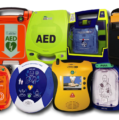What is CPR?
CPRLearn September 11, 2020 AED Malaysia
CPR – or Cardiopulmonary Resuscitation – is an emergency lifesaving procedure performed when the heart stops beating.
While no statistics are available on the exact number of lives sudden cardiac arrest claims per year. We can still conclude that approximately 335,000 people die annually of coronary heart disease without being hospitalized.
Why CPR?
It is due to all our body cells require oxygen to survive. Our bodies carry oxygen and nutrients in our blood which pumped by our heart. When a person goes into cardiac arrest, their heart stops beating. In addition, there are numerous causes for cardiac arrest which include:
- Disturbance in the heart rhythm
- Drug/ poisoning
- Heart disease/ a heart attack
- Traumatic injury/ Blood loss
- Anaphylaxis (life-threatening allergic reaction)
If a cardiac arrest occurs, blood will slowly stop circulating around the body. Without the supply of oxygen to our body cells, they will slowly start to die. Within 4 – 5 minutes of no oxygen, brain cells will begin dying which leads to brain damage and death.
The purpose of CPR is to keep oxygenated blood flowing around the body. Thus, keep them alive until an AED or medical personnel arrives. In addition, an AED is a device that delivers an electrical shock to the heart to restart it. Before beginning any CPR, always remember Dr. ABC.
What is DR. ABC?
–D stands for Danger: Check for any dangers to yourself.
–R means Response: Check for a response from the casualty. Shout and gently shake them on the shoulders.
–A which is Airway: Kneel by the casualty’s head and open their airway by tilting their head backward.
–B is Breathing: Place your ear above their mouth and look at their chest. Check for normal breathing (regular breaths) for up to 10 seconds.
–C for Call 999 / Circulation: If the casualty is not breathing, you should call an ambulance and start chest compressions.
If someone collapsed and not breathing, you should start CPR immediately by administering 30 chest compressions and 2 breaths. Start by interlocking your hands and place them in the middle of the person’s chest and push down 30 times. After that, tilt the casualty’s head backward and breathe in twice. Most noteworthy, you should always aim for a rate of 100 chest compressions a minute.
Stop CPR if the situation below happen :
- A defibrillator arrives and is about to be used.
- The casualty shows signs of life: coughing, breathing, etc.
- You are asked to stop by a healthcare professional (ambulance crew etc.)
- You become too exhausted to continue.
- The situation suddenly becomes too dangerous.
Always ensure that there is someone around to help you carry out CPR when you exhausted. Furthermore, if the casualty starts breathing, place them on their side to prevent their tongue from blocking their airway.








